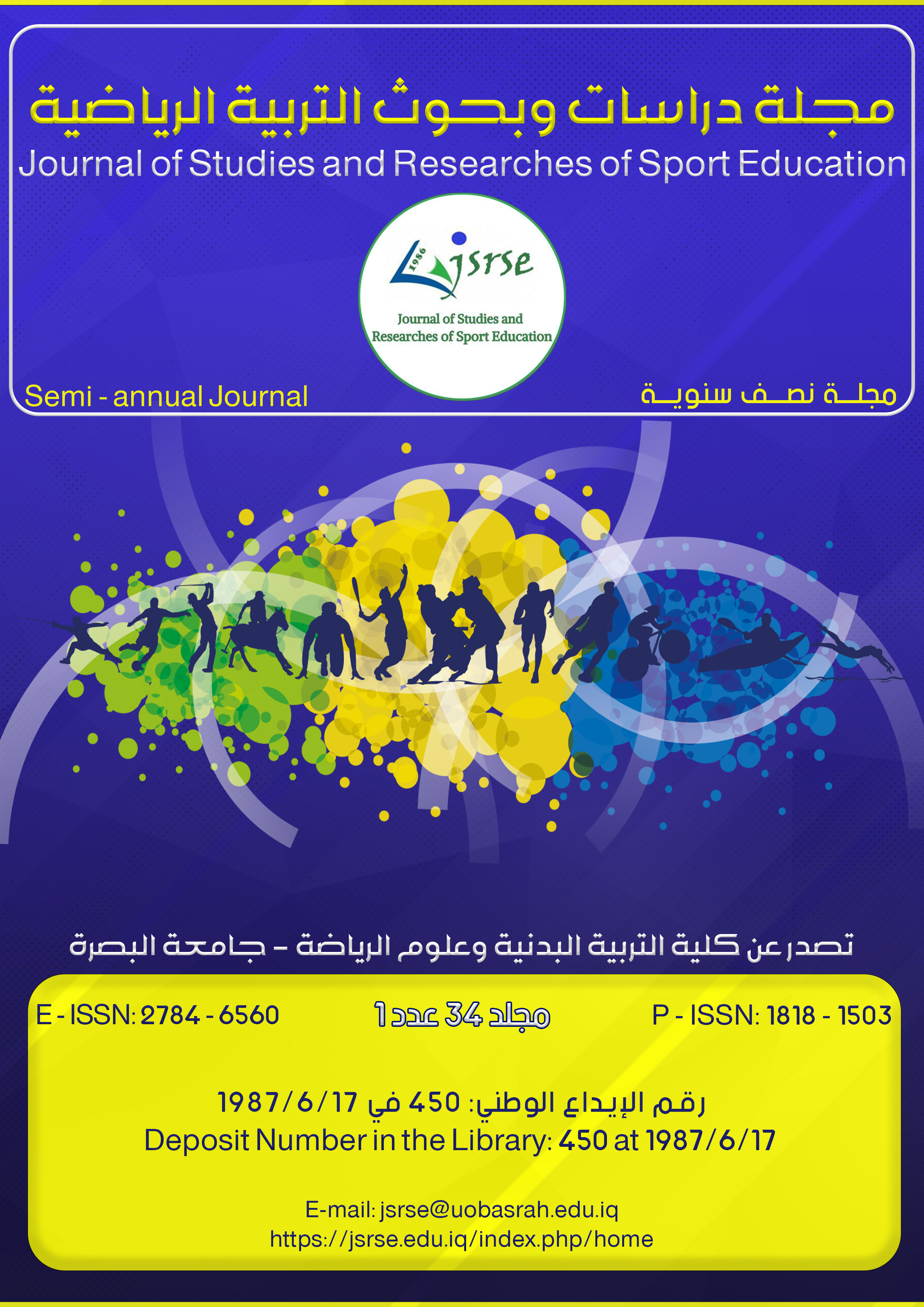Leg deviations and its effect on the amount of work and some physical capabilities of the legs in some sports
Main Article Content
Abstract
The aim of the research is to identify the extent of the effect of this deviation on the physical variable and whether leg deviations have an effect on the variable of vertical work and some types of muscular strength of the legs among some athletes who practice some sports. The researchers chose the research sample in a deliberate manner, namely the young athletes for some sports. Individual and team sports for the sports season (2022-2023), numbering (16) players, were as follows [(football (4), basketball (3), handball (1), wrestling (3), weightlifting (3), construction) Objects (2)] In order to ensure the homogeneity of the sample in terms of variables that may affect the conduct of the experiment in front of the researchers, the researchers used a set of tests (the test for measuring the deviation of the legs, the vertical jump test, the long forward jump test, the Nelson motor response test, the amount of work vertical) on the research sample, and the researchers used the Spss Ver 19 statistical package to obtain results for the data. The researchers concluded that there were no significant relationship differences between leg deflection and the amount of vertical work, which is due to the speed variable. The researchers recommended ensuring medical examinations, especially leg deflections. Because it has a significant impact on the power variable, which has an impact on other variables.
Article Details

This work is licensed under a Creative Commons Attribution-NonCommercial 4.0 International License.
References
Al-Jadaan, D. A. N., Zaalan, M. S., & Ali, I. A. (2020). Analytical Study to Indicate the Comparison in Biomechanical Variables of Handball Scoring. International Journal of Psychosocial Rehabilitation, 24(2), 160–171.
Aljadaan, D. A. S. N. (2018). The amount of movement quantity decrease and its effect on the output accuracy and strength to the skill of remote aiming by jumping for handball. Bucharest, Marathon Journal, 10(2), 67.
Ammar, M. O. (2018). Comparative Study of Some Aspects of Muscle Power among Volleyball and Basketball Players. College Of Basic Education Researches Journal, 14(3), 299–320. https://www.iasj.net/iasj/article/148068
BadrKhalaf, H., Aldewan, L. H., & Abdul-Hussein, Th. S. (2021). The impact of the Zahorek model on the development of students’ football dodge skill. Journal of Studies and Researches of Sport Education, 31(1), 173–185. https://jsrse.edu.iq/index.php/home/article/view/88
Dhurgham, A. N. A.-J., & Imad Adel Ali. (2020). Design and rationing of a test to measure the accuracy of the cornering skill by jumping from a corner and some biomechanical variables after performing the physical effort in. International Journal of Psychosocial Rehabilitation, 24(9), 4541–4548.
Kassem, D. A. S. N. W. (1818), & Jawad. (2015). The relationship of the inertia torque of the kicked parts of the finer performance of the scoring skill of football for the halls. Journal of Physical Education Studies and Research, 43, 401–412.
Lamia Hassan Mohamed, & ruaa Mohammed Aboud. (2015). The impact of a proposed curriculum lessons Educational motor using effective teaching In the development of creative thinking for the children of the preparatory stage. Journal of Studies and Researches of Sport Education, 42, 32–48. https://www.iasj.net/iasj/article/104025
Othman, I. A., Mohamed, L. H., & Shabib, S. S. (2023). The effect of Top Play and Top Sport cards using recreational games in developing children’s creative abilities. Journal of Studies and Researches of Sport Education, 33(2), 33–51. https://doi.org/https://doi.org/10.55998/jsrse.v33i2.466
Sabah, M. S. (2019). The percentage of the contribution of biomechanical variables to the stages of technical performance (approaching, upgrading, flying, landing) in achieving the long jump event. Al.Qadisiya Journal for the Sciences of Physical Education, 19(2 part(2)), 57–68. https://www.iasj.net/iasj/article/218961
Saleh, N. R., & Hardan, A. S. (2023). Building standards for motor tests in endurance handball skill performance. Wasit Journal Of Sports Sciences , 15(2), 490–505. https://www.iasj.net/iasj/article/278793
Zeghair, H. O., Abbas, kadhim H., Hasan, S. H., & Al-Jadaan, D. N. (2021). AN ANALYTICAL STUDY OF THE LEVELS OF PSYCHOLOGICAL COMPATIBILITY IN PREMIER-CLASS HANDBALL PLAYERS. Turkish Journal of Physiotherapy and Rehabilitation, 32(3), 16632–16641. https://faculty.uobasrah.edu.iq/uploads/publications/1670921764.pdf





 IASJ
IASJ CC-BY-4.0
CC-BY-4.0 turnitin
turnitin ISSN
ISSN DOAJ
DOAJ Crossref
Crossref GoogleScholar
GoogleScholar Orcid
Orcid